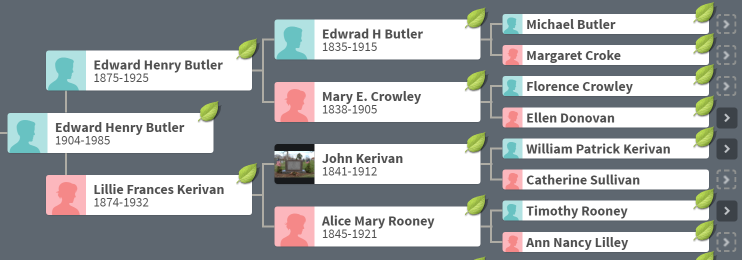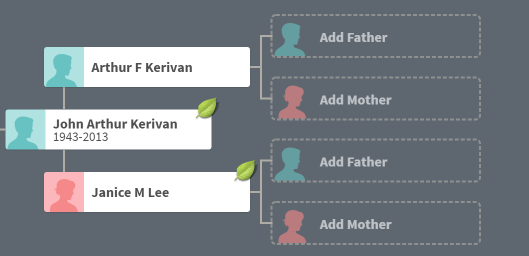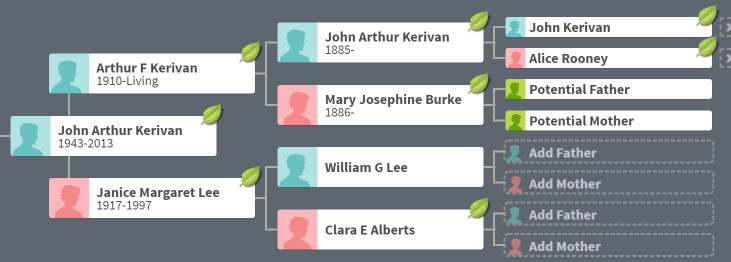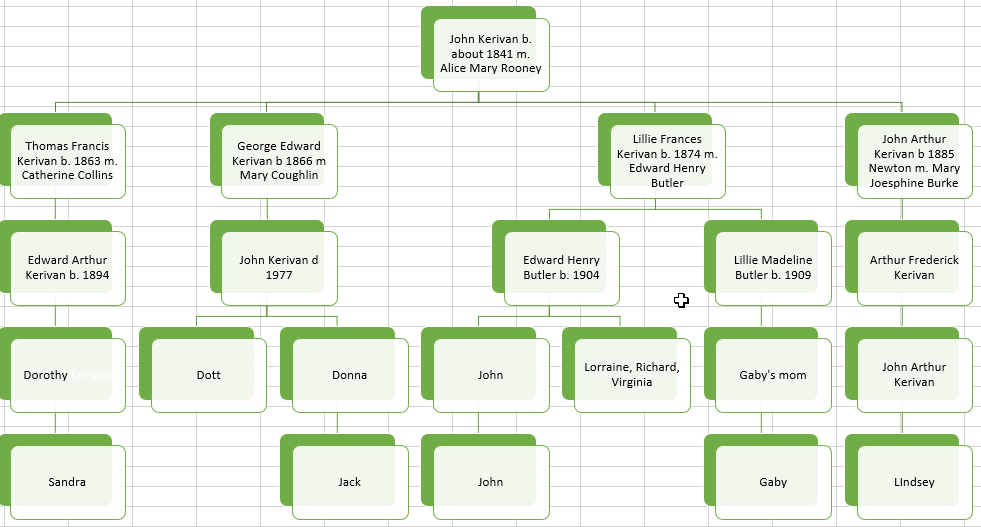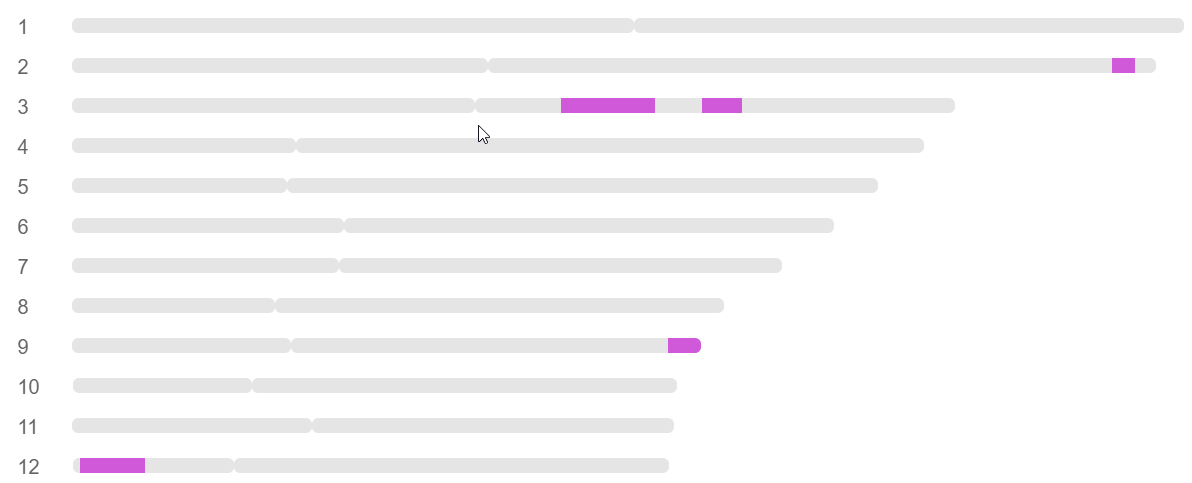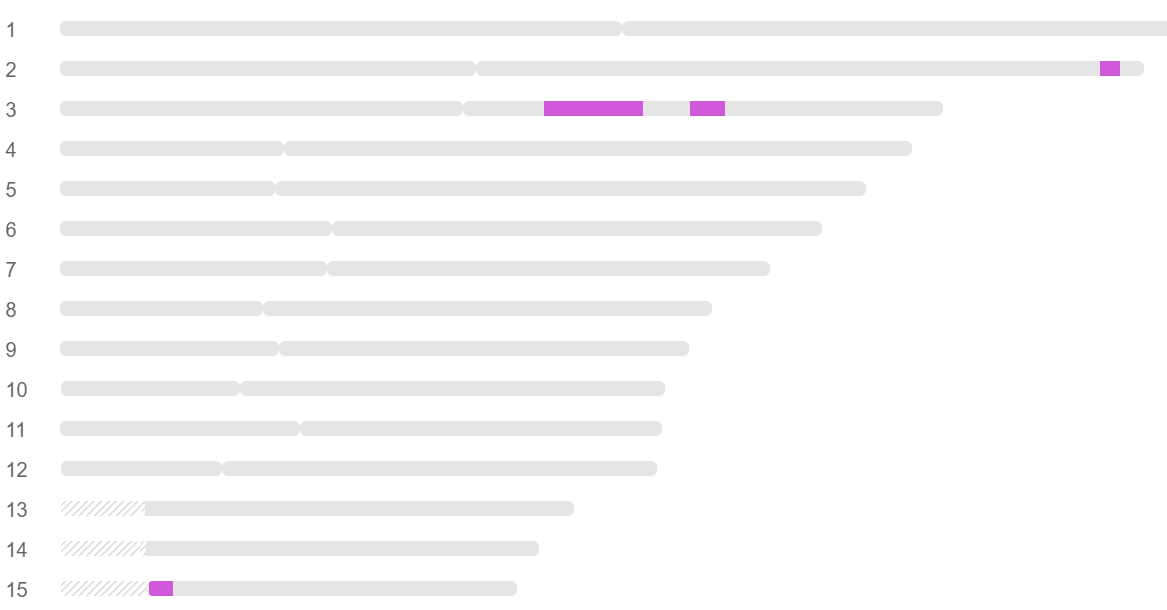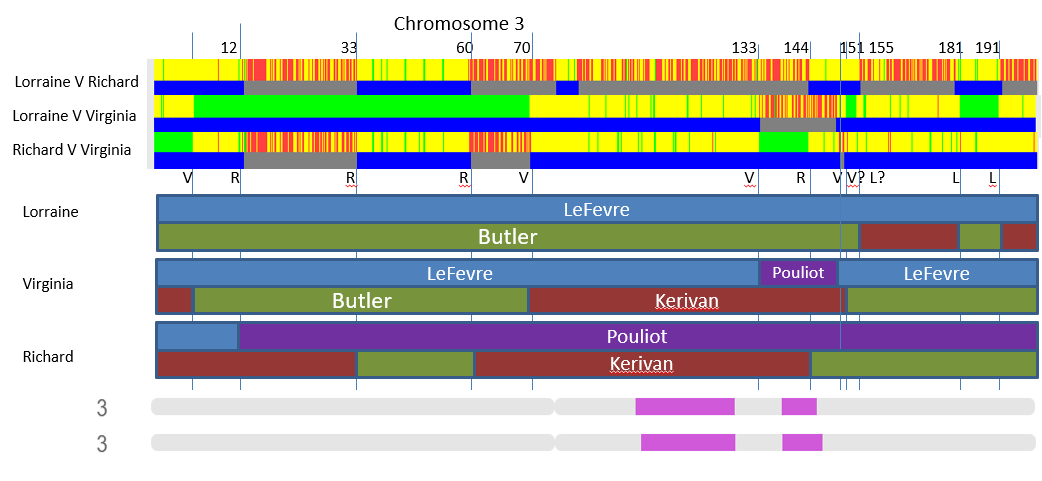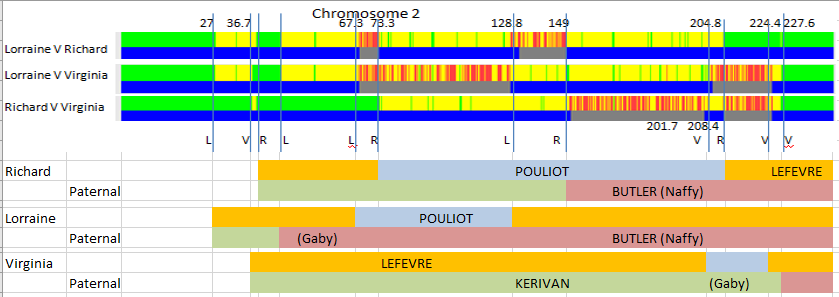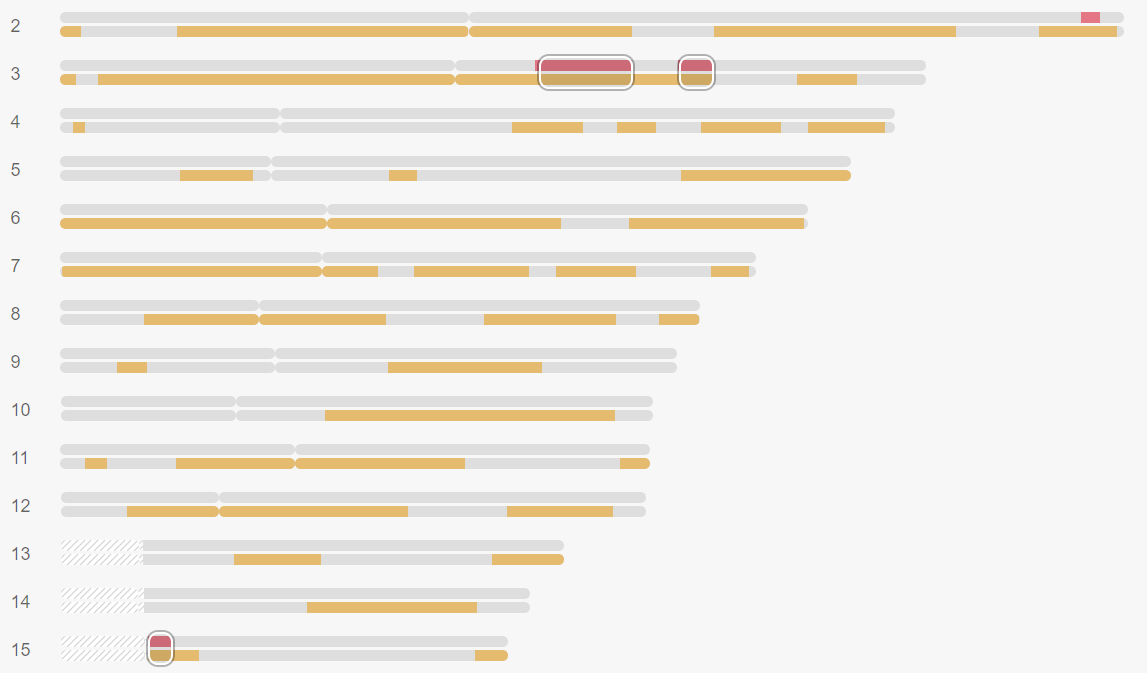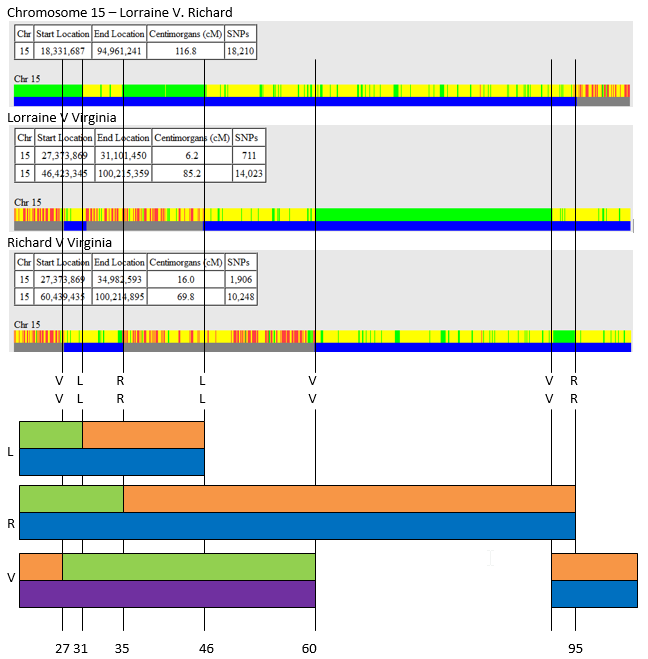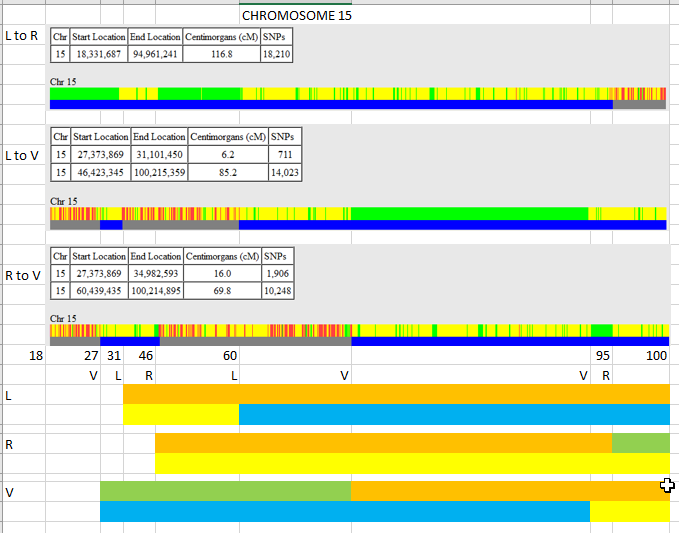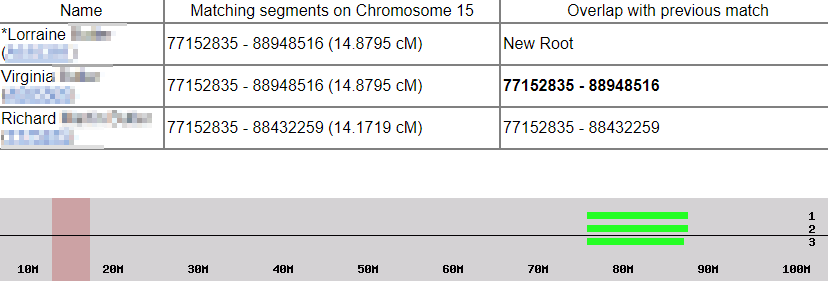I just uploaded my father’s DNA results to MyHeritage. He has a pretty good match at MyHeritage with Lindsey. Lindsey has this tree:
My father-in-law’s grandmother was a Kerivan. As Kerivan is not a common name, I am hoping that is where the match is.
Richard’s great-grandfather was also John Kerivan, but born 100 years before Lindsey’s John:
Connecting John and John Kerivan
The next step would be to try to connect the two Kerivans. I can do this by trying to build out Lindsey’s tree. First I start one at Ancestry. From a Duxbury Church record, I see that Arthur was born in Waltham, MA:
Here is the connection on Lindsey’s paternal side:
At this point, I like to put Lindsey into a top down Kerivan tree:
This tree shows how Lindsey is related to other Kerivan descendants who have had their DNA tested. It turns out the Kerivans had a big family. Lindsey’s great-grandfather John Arthur was a late arriver as he was born 22 years after Thomas Francis Kerivan. My last update on Kerivan DNA was here. The people at the bottom of this tree have all tested at AncestryDNA except for Richard and Lindsey. John, Lorraine, Richard, Virginia, and Gaby have their DNA also at Gedmatch. I put Lorraine, Richard’s and VIrginia’s DNA at MyHeritage, where I found the match to Lindsey. Gedmatch and MyHeritage have chromosome information, so we can compare the results of those on the right hand side of the chart.
Kerivan DNA
This shows where Richard and Lindsey match at MyHeritage:
The purple sections represent the DNA of John Kerivan and Alice Rooney that Richard and Lindsey share.
Here is how Lindsey compares with Richard’s sister Virginia:
Virginia doesn’t have the same DNA at Chromosomes 9 and 12 but does have a match on Chromosomen 15 that Richard doesn’t have.
Here is Lindsey’s match with Richard’s other sister Lorraine:
It looks like Lorraine got less Kerivan DNA compared to Lindsey when the DNA dice rolled.
Lindsey and Chromosome Mapping
In 2016, I mapped Chromosome 3 for my father-in-law Richard and his two sisters:
This shows where Lorraine, Virginia and Richard got their DNA on Chromosome 3 from their three grandparents. Their maternal side is on the top of the Chromsome. The paternal side is on the bottom but was not identified as I had no known Kerivan or Butler matches on Chromosome 3. Now it is clear that the maroon is Kerivan and the green if Butler DNA.
Here is the Chromosome map with Linsey’s match with Virginia and Richard:
The resean why Lorraine didn’t match with Lindsey on Chromosome 3 is that she had Butler DNA in that region and not Kerivan. This shows the way we inherit our DNA. We get it from our parents, but our parents are actually giving us their parents’ DNA.
Mapping My In-Law’s Chromosome 12
I have even less on my in-law’s Chromosome 12:
I notice that Lindsey matches for the first part of the Chromosome. It looks like I figured out previously from a cousin match which side would be maternal and which side would be paternal. That means that the Kerivan DNA should be blue and the Butler DNA is yellow.
My in-laws also have more matches at Gedmatch.com compared to when I first did this mapping. Here is SL who matches on the LeFevre side:
By comparing SL’s matches to Lorraine, Virginia and Richard, it is clear that LeFevre is the raspberry color. That leaves orange to Pouliot:
Now when these three siblings have a DNA match, it should be possible to figure out on what grandparent side they match. Also note that between the three siblings, they have recreated all their mother’s LeFevre DNA. On their father’s side they have shown all the Kerivan DNA that their father had. Some Butler and Pouliot is missing and was not brought down to any of these three siblings.
Solving the Chromosome 9 Map with Lindsey
Lindsey matched Richard and Lorraine at the right ends of their Chromosome 9. Here is what I had:

I was stuck on the right end of Richard’s Chromosome 9. Now I know that green is Kerivan.
That means that Richard got a full dose of Kerivan and no Butler on his Chromosome 9. Richard had a crossover at position 124M. That means that it has to be on his maternal side as Lindsey proved that he has a Kerivan DNA where she matched him on the right end of the Chromosome.
The left side of Virginia’s Chromosome 9 can be solved with results from SL who shares LeFevre DNA with these three siblings:
Here #3 is Lorraine. This shows that only Lorraine has LeFevre DNA at the left side of their Chromosome 9. Here is the completed Chromosome 9:
Chromosome 2
By the number of versions of Chromosome 2 that I have save, I can tell that I had a hard time figuring this one out. This is one version of what I had:
This shows Butler DNA on the right hand side for each sibling. However, Lindsey shows a match with each sibling from 233 to 238 M. That means that Lindsey either has a false match or I made the map wrong. I’ll have to figure this one out later and look for more matches. The lower number, longer chromosomes canbe more difficult to map than the shorter ones.
Lindsey and Triangulation
Triangulation is when three people match each other on the same segment of the chromosome. That means A = B, B = C and A = C. Most would consider triangulation more useful when it is between people that are more distant that parent/child or siblings. Lindsey, Virginia, and John triangulate, but as John is a nephew of Virginia, it is like having a triangulation of a sibling. Here is how that triangulation looks like at MyHeritage:
Here the yellow is where Virginia matches her newphew John. Red is where Virginia matches Lindsey. The circled parts are where Lorraine, Lindsey and John have triangulated segmets. That means that they all match each other. What is interesting is that Virginia, Lindsey, and John don’t triangulate on Chromosome 2. That is where I was having trouble fitting in that match on the Chromosome 2 Map. What does it mean when there is not triangulation? It means that there is no common ancestor between all three people. I look at it this way: I match my father’s sister, my Aunt and my mother’s brother, my Uncle. However that Aunt and Uncle do not match each other and the three of us do not have a common ancestor. It is a matter of a match between your maternal and paternal sides where those sides do not match each other by DNA. So, above, the circled parts indicate Kerivan ancestry and the non-circled match represents something else. The uncircled part is probably part Kerivan match and part something else.
Back to Mapping Chromosome 15
I see that I didn’t use Lindsey’s match to help map my in-law’s Chromosome 15. It has been over two years since I mapped this and was having difficulties:
At MyHeritage, only Virginia out of the three siblings matched Lindsey at the beginning of Chromosome 15. I’ll give this a second try:
This looks better. This time I started more in the middle of Chromosome 15 and worked my way out.
Here is the match with RL who is on the maternal LeFevre side:
I notice that there are three LeFevre matches from about position 77M to 88 or 90M. The only place that this could occur on the map would be in the orange. So orange must be LeFevre.
This map looks better. However, I still don’t know if Lindsey’s match with Virginia is blue or yellow. I would have to know more about the maternal or paternal side at the left-hand part of the Chromosome.
Summary and Conclusions
- Lindsey is the only non-close relative that I have found that descends from John Kerivan and Alice Rooney and has specific information on her DNA. That DNA information is found at MyHeritage.
- Lindsey’s matches with my father-in-law and his sisters helped me fill out their chromosome maps.
- Lindsey has shared matches with my in-laws and triangulated segments with some of these shared matches. That means that those people would likely share common ancestors. I didn’t look into these shared triangulated matches.
- One of Lindsey’s matches went against what I had for my in-law’s Chromosome 2 Map. However, this match segment didn’t triangulate which means that it was likely not a Kerivan only match.


